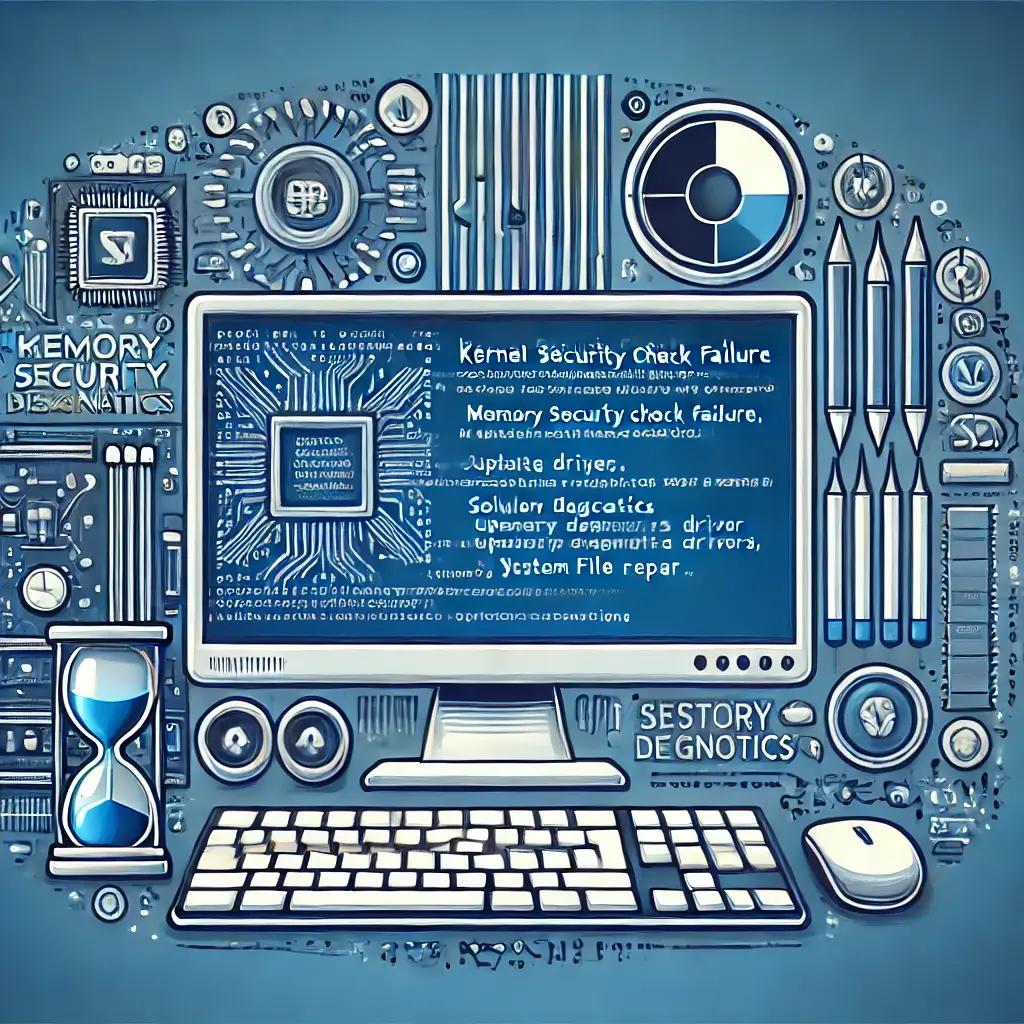Kernel Security Check Failure: BSOD Explained with 9 Solutions
The Kernel Security Check Failure is a common error that can result in the dreaded Blue Screen of Death (BSOD). This issue typically points to corruption in the system files, incompatible drivers, or hardware problems. In this guide, we’ll walk through 9 effective solutions to resolve this error and get your system back on track.

What is Kernel Security Check Failure?
The Kernel Security Check Failure is a safety measure used by the operating system to prevent further damage when critical issues occur. It’s usually triggered by:
- Corrupted system files
- Outdated or incompatible drivers
- Faulty hardware
- Memory issues
When this happens, Windows halts all processes and displays a BSOD, preventing potential data loss or system corruption.
Solution 1: Run the Windows Memory Diagnostic Tool
One common cause of the Kernel Security Check Failure is memory issues. To diagnose and repair these issues, follow these steps:
- Open the Start Menu and search for Windows Memory Diagnostic.
- Run the tool and select Restart now and check for problems.
- Windows will reboot and automatically check your system’s memory for errors.
Solution 2: Check and Update Drivers
Incompatible or outdated drivers can lead to BSODs. Here's how to ensure your drivers are up to date:
- Right-click the Start button and select Device Manager.
- Check for any devices with a yellow exclamation mark. These indicate driver issues.
- Right-click the device and choose Update driver.
- Select Search automatically for updated driver software.
Make sure to update key drivers such as graphics, network, and storage drivers.
Solution 3: Run System File Checker (SFC)
Corrupted system files may cause the Kernel Security Check Failure. Running the System File Checker can fix these files:
- Open Command Prompt as an administrator.
- Type the command
sfc /scannowand hit Enter. - The system will scan and attempt to repair any corrupted files.
Solution 4: Perform a Clean Boot
Conflicting programs or services can sometimes trigger BSODs. Performing a Clean Boot can help identify the culprit:
- Press Win + R, type
msconfig, and press Enter. - In the Services tab, check Hide all Microsoft services, then click Disable all.
- In the Startup tab, disable unnecessary startup programs.
- Restart your computer.
Solution 5: Scan for Malware
Malicious software can corrupt essential system files, leading to BSOD errors. Use a trusted antivirus or anti-malware program to run a full system scan and remove any threats.
Solution 6: Update Windows
Microsoft regularly releases updates to fix bugs and improve system stability. Ensure that your Windows OS is up to date:
- Go to Settings > Update & Security.
- Check for updates and install any pending updates.
Solution 7: Check Disk for Errors
Hard drive issues, such as bad sectors, can cause the Kernel Security Check Failure. Use Check Disk to scan for disk errors:
- Open Command Prompt as an administrator.
- Type the command
chkdsk /f /rand hit Enter. - Follow the prompts and restart your computer to allow the tool to scan the disk.
Solution 8: Revert Recent Changes
If you started experiencing the BSOD after installing new software or hardware, try removing the recent changes:
- Uninstall any newly installed software or drivers.
- Disconnect any new hardware to see if the issue is resolved.
Solution 9: Reset or Reinstall Windows
As a last resort, if none of the above solutions work, you can reset or reinstall Windows:
- Go to Settings > Update & Security > Recovery.
- Select Reset this PC and follow the prompts to either keep or remove your files.
Conclusion
The Kernel Security Check Failure error can be frustrating, but with the right steps, it can usually be resolved. Whether it’s a memory issue, driver conflict, or file corruption, following these 9 solutions should help you troubleshoot and fix the problem.
If the issue persists after trying these steps, it may indicate a deeper hardware problem. In that case, contacting a professional may be necessary.
Stay proactive by regularly updating your system and drivers to avoid such errors in the future.
Tip: Regular system maintenance, such as keeping your drivers up to date and checking for disk errors, can significantly reduce the risk of encountering BSODs.
